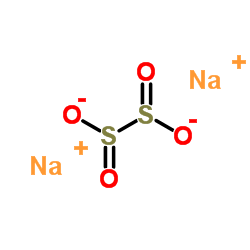The use of dithionite reduction to identify the essential tyrosine residue in the F1-ATPase from the thermophilic bacterium, PS3, that reacts with 7-chloro-4-nitrobenzofurazan.
J G Verburg, M Yoshida, W S Allison
文献索引:Arch. Biochem. Biophys. 245 , 8, (1986)
全文:HTML全文
摘要
When the F1-ATPase from the thermophilic bacterium, PS3, was inactivated by greater than 90% with 7-chloro-4-nitro[14C]benzofurazan ([14C]Nbf-Cl) at pH 7.4, 1.4 mol of [14C]Nbf were incorporated per mol of enzyme. After pepsin digestion of the labeled enzyme at pH 3.0, a single, major peak of radioactivity was resolved by reversed-phase high-performance liquid chromatography under acidic conditions were peptidyl Nbf-O-tyrosine is stable. This radioactive peak, designated RP-1, eluted with a retention time of 95 min. When the material in RP-1 was subjected to reversed-phase high-performance liquid chromatography under the same conditions after treatment with sodium dithionite, a single, major peak of radioactivity, designated RP-2, was resolved with a retention time of 52 min. Automatic Edman degradation of this material revealed that it has the amino acid sequence I-Y*-V-P-A-D-(D), where Y* presumably represents peptidyl [14C]Nbf-O-tyrosine. These results provide the basis for a facile method to purify peptides containing [14C]Nbf-O-tyrosine in which the labeled residues can be identified by amino acid sequence analysis using the Edman degradation.
相关化合物
| 结构式 | 名称/CAS号 | 分子式 | 全部文献 |
|---|---|---|---|
 |
连二亚硫酸钠
CAS:7775-14-6 |
Na2O4S2 |
|
Osmoregulatory bicarbonate secretion exploits H(+)-sensitive...
2014-10-01 [J. Comp. Physiol. B, Biochem. Syst. Environ. Physiol. 184(7) , 865-76, (2014)] |
|
The enrichment of an alkaliphilic biofilm consortia capable ...
2015-08-01 [FEMS Microbiol. Ecol. 91 , fiv085, (2015)] |
|
A role for catalase-peroxidase large loop 2 revealed by dele...
2015-03-03 [Biochemistry 54(8) , 1648-62, (2015)] |
|
GlxA is a new structural member of the radical copper oxidas...
2015-08-01 [Biochem. J. 469 , 433-44, (2015)] |
|
C-phycocyanin prevents cisplatin-induced mitochondrial dysfu...
2015-08-01 [Mol. Cell Biochem. 406 , 183-97, (2015)] |